Like many Lodges, Civil Service Lodge has had its share of members who have made significant contributions to Craft and country. Here are of some of our most notable:
Bro. Robbie David
William Mercer Wilson Award Recipient — Awarded March 10, 2009 Each year Robbie, through his two restaurants, has sponsored the Special Olympics Marathon in Ottawa by donating sandwiches and beverages for the volunteers. For each of the past ten or more years, he has supported T-ball teams for underprivileged children in the community. He assists in the local Ride for Dad fund raising campaign in support of prostate cancer treatment and research. He is a volunteer and supporter of the Terry Fox Run in Ottawa each year, and alone has raised over $10,000 for cancer research. Brother David's devotion to the Craft is unflagging; a continuing source of guidance and inspiration to friends, neighbours and Brethren alike, he lives and presents his principles in such a fashion that men of goodwill everywhere are drawn to emulate his lifestyle.In the presence of Most Worshipful Brother Allan J. Petrisor, Grand Master; Right Worshipful Brother Raymond S.J. Daniels, Deputy Grand Master; Most Worshipful Brother Donald H. Mumby, Past Grand Master; Right Worshipful Brother David A. Ganderton, District Deputy Grand Master, and a delegation of honoured guests and visitors numbering in excess of 200, Brother David was presented with the William Mercer Wilson Medal for Meritorious Service. He is only the second member in the history of our lodge to receive this distinction. In 1961, the medal was awarded to Brother Arthur Morphy Hill.
Each year Robbie, through his two restaurants, has sponsored the Special Olympics Marathon in Ottawa by donating sandwiches and beverages for the volunteers. For each of the past ten or more years, he has supported T-ball teams for underprivileged children in the community. He assists in the local Ride for Dad fund raising campaign in support of prostate cancer treatment and research. He is a volunteer and supporter of the Terry Fox Run in Ottawa each year, and alone has raised over $10,000 for cancer research. Brother David's devotion to the Craft is unflagging; a continuing source of guidance and inspiration to friends, neighbours and Brethren alike, he lives and presents his principles in such a fashion that men of goodwill everywhere are drawn to emulate his lifestyle.In the presence of Most Worshipful Brother Allan J. Petrisor, Grand Master; Right Worshipful Brother Raymond S.J. Daniels, Deputy Grand Master; Most Worshipful Brother Donald H. Mumby, Past Grand Master; Right Worshipful Brother David A. Ganderton, District Deputy Grand Master, and a delegation of honoured guests and visitors numbering in excess of 200, Brother David was presented with the William Mercer Wilson Medal for Meritorious Service. He is only the second member in the history of our lodge to receive this distinction. In 1961, the medal was awarded to Brother Arthur Morphy Hill.
The William Mercer Award
Named after our first Grand Master, this medal, the highest award in Freemasonry to a brother in our jurisdiction, is given to one who represents the Craft well and looks for no reward or publicity for the work that he performs within the lodge or outside of the lodge – a modest man who for reasons of his own has not gone on to become a Worshipful Master of the Lodge, but has given that opportunity unselfishly to many others in his Masonic career. Generally, he is a mild mannered, soft spoken individual who labors quietly and patiently in the pursuit of brotherly love, and making life better for all with whom he comes into contact. Their presence makes a difference in their lodge. This is a William Mercer Wilson Medal recipient.
Alexander J. Cambie, Patent Clerk Department of Agriculture, Grand Junior Warden, Charter Member
circa 1835 — February 1887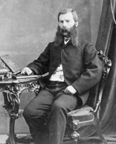 R.W. Bro. Alexander Jeffrey Cambie, Grand Junior Warden, was a member of Rehoboam Lodge No. 65, Toronto, and a founding member of Civil Service Lodge No. 148. Born in Ireland, he emigrated to Quebec City and obtained a position in the civil service, becoming chief patent clerk with the Department of Agriculture. Between 1860 and 1870, Rehoboam Lodge was not in active operation because most of its members were associated with the Government of Canada whose seat alternated every four years between Toronto and Quebec City but which, in 1859, had moved permanently to Quebec. In 1861, M.W. Bro. Thomas D. Harington (Roll No. 36) issued dispensation which authorized Civil Service Lodge to operate 'as in the nature of a Military Lodge; that is, a travelling lodge'. R.W. Bro. Cambie joined our lodge on the night of our institution, May 14, 1861 and became our first Inner Guard. He served as Worshipful Master in 1871 and again in 1872. His younger brother, Bro. Henry John Cambie (Roll No. 131), was also a member of the lodge.
R.W. Bro. Alexander Jeffrey Cambie, Grand Junior Warden, was a member of Rehoboam Lodge No. 65, Toronto, and a founding member of Civil Service Lodge No. 148. Born in Ireland, he emigrated to Quebec City and obtained a position in the civil service, becoming chief patent clerk with the Department of Agriculture. Between 1860 and 1870, Rehoboam Lodge was not in active operation because most of its members were associated with the Government of Canada whose seat alternated every four years between Toronto and Quebec City but which, in 1859, had moved permanently to Quebec. In 1861, M.W. Bro. Thomas D. Harington (Roll No. 36) issued dispensation which authorized Civil Service Lodge to operate 'as in the nature of a Military Lodge; that is, a travelling lodge'. R.W. Bro. Cambie joined our lodge on the night of our institution, May 14, 1861 and became our first Inner Guard. He served as Worshipful Master in 1871 and again in 1872. His younger brother, Bro. Henry John Cambie (Roll No. 131), was also a member of the lodge.
James H. Rowan, Civil Engineer, First Worshipful Master, Charter Member
circa 1830 — unknown
R.W. Bro. James Hill Rowan, was Engineer-in-Charge, Eastern Section, with the C.P.R. survey in Manitoba. He was among a group of C.P.R. officials who gave unqualified preference to Sir Sandford Fleming's proposal of the division of the day into a single series of hours numbered from one to twenty-four, thereby establishing the system of 24-hour railway time. A Past Master of St. John's Lodge No. 491, Kingston, he was installed as our first Worshipful Master on May 14, 1861. He served again as Worshipful Master in 1862, and as Secretary from 1863 to 1864. In 1865, he was appointed Grand Steward, and served a third term as Worshipful Master in 1866. In February, 1866, R.W. Bro. Rowan, Acting District Deputy Grand Master, Quebec District, assisted R.W. Bro. Thomas D. Harington (Roll No. 36), Acting Grand Master, and other Brethren of Civil Service Lodge in the laying of the cornerstone of St. James Church in Hull, Quebec.
William B. Lindsay Jr, First Clerk of the House of Commons, Charter Member
unknown — unknown
Born in Quebec City, Bro. William Burns Lindsay Jr, was Clerk of the Legislative Assembly of the Province of Canada, which consisted of the former provinces of Lower Canada and Upper Canada. At Confederation, he became the first Clerk of the House of Commons in Ottawa, an office he retained until 1872. Bro. Lindsay came from a long dynasty of legislative clerks. His father, William Burns Lindsay Sr, was clerk of the Legislative Assembly of United Canada after 1841. His grandfather, also named William, was clerk of the Lower Canadian House of Assembly, and also served, in 1799, as justice of the peace for the district of Quebec. Originally a member of St. George Lodge No. 440, Montreal, Grand Registry of England, Bro. Lindsay joined our lodge on the night of our institution, May 14, 1861, and became our first Director of Ceremonies.
Rev. William A. Adamson, Doctor of Divinity, Chaplain & Librarian, Charter Member
November 21, 1800 — August 7, 1868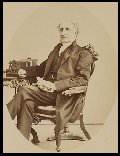 V.W. Bro. Rev. William Agar Adamson was born in Dublin and became chaplain and librarian to the Legislative Council of the Province of Canada, a position he held until 1867 when he became librarian to the Senate. While living in Western Ireland, he learned to enjoy angling, especially salmon fishing, an interest that would shape his life in Canada. Arriving in Canada in 1841, he was the first rector of the parish of Amherst Island. During his career, he was assistant to Christ Church Cathedral in Montreal and in Ottawa. He also served as secretary of the Church Society of the Diocese of Quebec, and was an evening lecturer at the cathedral in Quebec City. As a preacher, he was described as 'one of the most eloquent in North America'. As a fisherman, he wrote on the subject in his book Salmon-fishing in Canada, published in 1860. Several universities awarded him honorary Doctor of Civil Law degrees, including McGill University and the University of Bishop’s College. Rev. Bro. Adamson joined our lodge on May 14, 1861 and became our first Lodge Chaplain.
V.W. Bro. Rev. William Agar Adamson was born in Dublin and became chaplain and librarian to the Legislative Council of the Province of Canada, a position he held until 1867 when he became librarian to the Senate. While living in Western Ireland, he learned to enjoy angling, especially salmon fishing, an interest that would shape his life in Canada. Arriving in Canada in 1841, he was the first rector of the parish of Amherst Island. During his career, he was assistant to Christ Church Cathedral in Montreal and in Ottawa. He also served as secretary of the Church Society of the Diocese of Quebec, and was an evening lecturer at the cathedral in Quebec City. As a preacher, he was described as 'one of the most eloquent in North America'. As a fisherman, he wrote on the subject in his book Salmon-fishing in Canada, published in 1860. Several universities awarded him honorary Doctor of Civil Law degrees, including McGill University and the University of Bishop’s College. Rev. Bro. Adamson joined our lodge on May 14, 1861 and became our first Lodge Chaplain.
Thomas D. Harington, Grand Master, Grand Lodge of Canada
June 7, 1808 — January 13, 1882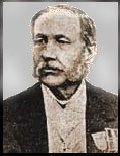 M.W. Bro. Thomas Douglas Harington's early life was spent in the service of the Royal Navy, and the Honourable East India Company's navy. Born in Windsor, England, he came to Canada in July 1832 and joined the civil service, rising to the position of Deputy Receiver-General for the United Provinces of Upper and Lower Canada. In 1858, he was reappointed under the Dominion of Canada, an office he held until his retirement. He was initiated into Freemasonry on December 13, 1843, in Duke of Leinster Lodge No. 283 in Kingston and served as Grand Master of the Grand Lodge of Canada from July 1860 to July 1863. In 1861, Warrant No. 145 was issued by him to form Civil Service Lodge No. 148 in Quebec City. In 1865, the lodge moved with the government to Ottawa. M.W. Bro. Harington joined our lodge on June 9, 1863.
M.W. Bro. Thomas Douglas Harington's early life was spent in the service of the Royal Navy, and the Honourable East India Company's navy. Born in Windsor, England, he came to Canada in July 1832 and joined the civil service, rising to the position of Deputy Receiver-General for the United Provinces of Upper and Lower Canada. In 1858, he was reappointed under the Dominion of Canada, an office he held until his retirement. He was initiated into Freemasonry on December 13, 1843, in Duke of Leinster Lodge No. 283 in Kingston and served as Grand Master of the Grand Lodge of Canada from July 1860 to July 1863. In 1861, Warrant No. 145 was issued by him to form Civil Service Lodge No. 148 in Quebec City. In 1865, the lodge moved with the government to Ottawa. M.W. Bro. Harington joined our lodge on June 9, 1863.
Herbert G.R. Fripp, Organist
circa 1830 — January 24, 1891
Born in Bristol, Avon, England, Bro. Herbert George Russell Fripp was organist from 1861 to 1871 at Christ Church Cathedral and 1871 to 1877 at St Alban's Church in Ottawa. In 1862, together with William Bohrer, he co-directed the Ottawa Musical Union, a choral-orchestral organization of nearly 100 members. The union was superseded by the Ottawa Choral Society, which Bro. Fripp founded in 1865. The Choral Society was eventually led by Bro. John Edgar Birch (Roll No. 253). The same year, he directed a Sacred Music Festival in Ottawa, and in 1866 and 1867, he directed several Grand Promenade Concerts. In 1869 he presented oratorio and operatic selections in the first concert of the Ottawa Philharmonic Society. Bro. Fripp joined our lodge on December 27, 1866.
John Walsh, Grand Junior Warden
circa 1843 — April 2, 1919
R.W. Bro. John Walsh, Grand Junior Warden, was employed by the civil service, and was sponsored into our lodge by R.W. Bro. Alexander Jeffrey Cambie (Roll No. 6). He served as secretary from 1870 to 1871, succeeding Bro. George C. Reiffenstein. In 1872, he became Junior Warden, with Bro. William Morgan Goodeve assuming the duties of secretary. R.W. Bro. Walsh served as Worshipful Master in 1875 and again in 1876. For the next 35 years, he faithfully fulfilled the duties of Treasurer. At the 1886 Annual Communication of the Grand Lodge of Canada, he was appointed Grand Representative to the Grand Lodge of the United States of Columbia. On January 9, 1894, he was elected an Honourary Life Member of the lodge. R.W. Bro. Walsh was initiated into our lodge on December 8, 1868.
The Right Honourable Sir John A. Macdonald, First Prime Minister of Canada, Father of Confederation
January 10, 1815 — June 6, 1891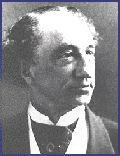 Born in Glasgow, Scotland, R.W. Bro. Sir John Alexander Macdonald, Father of Confederation, was a lawyer and Conservative M.L.A. for the United Province of Canada from 1844 to 1867 and Canada's First Prime Minister from July 1, 1867 to November 5, 1872. He was re-elected on October 17, 1878 and served until his death on June 6, 1891. He was knighted for his efforts in bringing about Confederation. Sir John was an Honourary Grand Senior Warden of the Grand Lodge of Canada in the Province of Ontario. Originally a member of Ancient St. John's Lodge No. 3 in Kingston, Ontario, he joined our lodge on May 11, 1869 and was made an Honourary Lifetime Member on July 8, 1869. His signature can be seen on the original Lodge By-laws.
Born in Glasgow, Scotland, R.W. Bro. Sir John Alexander Macdonald, Father of Confederation, was a lawyer and Conservative M.L.A. for the United Province of Canada from 1844 to 1867 and Canada's First Prime Minister from July 1, 1867 to November 5, 1872. He was re-elected on October 17, 1878 and served until his death on June 6, 1891. He was knighted for his efforts in bringing about Confederation. Sir John was an Honourary Grand Senior Warden of the Grand Lodge of Canada in the Province of Ontario. Originally a member of Ancient St. John's Lodge No. 3 in Kingston, Ontario, he joined our lodge on May 11, 1869 and was made an Honourary Lifetime Member on July 8, 1869. His signature can be seen on the original Lodge By-laws.
Lieutenant-Colonel Brown Chamberlin, Lawyer, Publisher & Politician, Order of St. Michael and St. George
March 26, 1827 — July 13, 1897
Born in Frelighsburg, Lower Canada, Bro. Brown Chamberlin studied at McGill College and was called to the bar in 1850. He worked as a journalist, and was publisher of the Montreal Gazette from 1853 to 1867. Bro. Brown rose to fame as a military leader during the Fenian raids in Canada East, where he served as lieutenant-colonel in the local militia and was named a companion of the Order of St. Michael and St. George for his role in repelling Fenian raiders at Eccles Hill. As a Conservative member of the Canadian House of Commons, he represented Missisquoi from 1867 to 1870. A friend of Sir John A. Macdonald, he was awarded the position of Queen's printer in Ottawa in 1870 and the same year married Agnes Dunbar FitzGibbon, daughter of Susanna Moodie. Bro. Chamberlin joined our lodge on September 13, 1870.
The Honourable John H. Gray, Lawyer, Politician & Judge, Father of Confederation
May 3, 1814 — June 5, 1889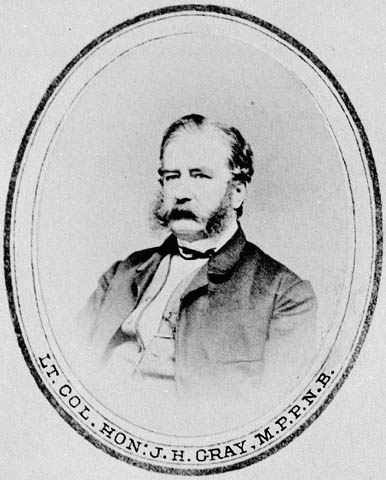 Born in St. George, Bermuda, Bro. John Hamilton Gray became a lawyer in 1836, and is considered one of the Fathers of Confederation. Politically, he became leader of the New Brunswick Conservatives in the legislative assembly and found himself leader of the opposition after the 1854 elections. In 1855, the government collapsed and he was asked to form an administration. As Premier, he led the Conservatives to victory in 1856 on an anti-prohibition platform and repealed the liquor law. In 1864, Bro. Gray became an active supporter of Canadian confederation and joined Samuel Leonard Tilley's new Liberal-Conservative party. He served as a delegate to the Charlottetown Conference, returning to New Brunswick to face growing hostility to the confederation project. In 1872, he was granted a judgeship in the Supreme Court of British Columbia. Bro. Gray joined our lodge on January 10, 1871.
Born in St. George, Bermuda, Bro. John Hamilton Gray became a lawyer in 1836, and is considered one of the Fathers of Confederation. Politically, he became leader of the New Brunswick Conservatives in the legislative assembly and found himself leader of the opposition after the 1854 elections. In 1855, the government collapsed and he was asked to form an administration. As Premier, he led the Conservatives to victory in 1856 on an anti-prohibition platform and repealed the liquor law. In 1864, Bro. Gray became an active supporter of Canadian confederation and joined Samuel Leonard Tilley's new Liberal-Conservative party. He served as a delegate to the Charlottetown Conference, returning to New Brunswick to face growing hostility to the confederation project. In 1872, he was granted a judgeship in the Supreme Court of British Columbia. Bro. Gray joined our lodge on January 10, 1871.
Sub-Inspector Edmund D. Clark, North West Mounted Police
circa 1848 — October 2, 1880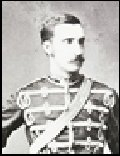 Bro. Edmund Dalrymple Clark, the first Paymaster and Quartermaster of the North West Mounted Police, was the nephew of Sir John A. Macdonald. Appointed in 1874, Bro. Clark was promoted to Superintendent in July 1879. He was a meticulous man and ably suited to his new role as paymaster. His work went beyond just keeping pay records. He also took care of purchases for the March West and later for equipping the posts. When the N.W.M.P. set out on the March West, Bro. Clarke and a handful of men were left behind at Fort Dufferin, Manitoba to take care of the numerous tasks involved with an army on the move. Later, he travelled to some of the posts, and died unexpectedly at Fort Walsh, Saskatchewan. Bro. Clark was initiated into our lodge on January 10, 1871.
Bro. Edmund Dalrymple Clark, the first Paymaster and Quartermaster of the North West Mounted Police, was the nephew of Sir John A. Macdonald. Appointed in 1874, Bro. Clark was promoted to Superintendent in July 1879. He was a meticulous man and ably suited to his new role as paymaster. His work went beyond just keeping pay records. He also took care of purchases for the March West and later for equipping the posts. When the N.W.M.P. set out on the March West, Bro. Clarke and a handful of men were left behind at Fort Dufferin, Manitoba to take care of the numerous tasks involved with an army on the move. Later, he travelled to some of the posts, and died unexpectedly at Fort Walsh, Saskatchewan. Bro. Clark was initiated into our lodge on January 10, 1871.
Louis W. Coutlée, Lawyer, Soldier, Land Registrar, Grand Organist
December 17, 1852 — May 3, 1917
Born in Hull, Quebec, V.W. Bro Louis William Coutlée, Grand Organist, served in the Canadian Militia, involved in the Fenian raids of 1866, the North-West Campaign of 1885, and was in action at Fish Creek and Batoche. He was engaged in the operation against Mistahimaskwa (Big Bear) after the capture of Louis Riel. V.W. Bro. Coutlée organized the administration of justice in Manitoba in 1881, and was Deputy Attorney-General and Law Clerk of the Manitoba Assembly from 1882 to 1887. He was instrumental in introducing the Torrens system of Land Titles Registration in Manitoba, and in 1887 he was appointed Registrar-General. In 1895, he was appointed Assistant Reporter of the Supreme Court of Canada. While residing in Ottawa, he was a member of the exclusive Rideau Club, and became part of the city's social elite. V.W. Bro. Coutlée was initiated into our lodge on November 11, 1873 and served as Worshipful Master in 1880 and 1881.
Frederick A. Dixon, Playwright & Journalist
May 7, 1843 — January 12, 1919
Born in London, England, Bro. Frederick Augustus Dixon was a playwright, journalist, and civil servant. Educated at King's School, Canterbury, he came to Canada in the 1870s and worked as a journalist in Toronto. During the time of the Dufferins at Rideau Hall, he was appointed tutor to their 4 sons, during which time he wrote children's plays of wit and imagination. On their departure, he joined the Department of Public Works. In 1875, Bro. Dixon wrote a libretto for the popular The Maire of St Brieux: An Operetta in One Act, and a masque entitled Canada's Welcome in 1879, for the arrival of the new Governor General, the Marquess of Lorne, and his wife, Princess Louise. He was instrumental in the formation of the Royal Academy of Art in Canada. Bro. Dixon was initiated into our lodge on March 10, 1874.
George L. Orme, Musical Instrument Retailer & Piano Manufacturer
unknown — circa 1916
Bro. George Lewis Orme, operated J.L. Orme & Sons, an Ottawa music firm, and one of the oldest surviving names in the Canadian music trade, after 1893, following the death of his father and company founder, James Lawrence Orme. Among the goods sold were imported wind instruments, U.S. pianos (Emerson, Dunham & Sons, etc.) and Estey reed organs. An Orme Concert Hall opened on Wellington Street in 1900, and the Martin-Orme Piano factory opened on Sparks Street in 1902. It made between 300 and 500 upright and player pianos each year and won high respect among local musicians. Owain Martin, formerly a Heintzman superintendent, provided the technical knowledge, and Bro. Orme the business skills. The company's name was changed to Orme Interiors Ltd. in 1990. Bro. Orme joined our lodge on February 8, 1876.
Henry J. Cambie, Civil Engineer & Surveyor
October 25, 1836 — April 23, 1928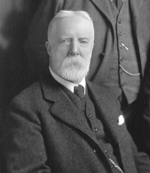 Born in Ireland, Bro. Henry John Cambie, younger brother to R.W. Bro. A.J. Cambie (Roll No. 6), came to Canada as a boy, and learned railroading and surveying with the Grand Trunk Railway. With the Confederation of Canada in 1867, the C.P.R. was contracted to build a transcontinental railway, which would link the new country and the adjacent colonies and territories of British North America. With the expansion of the railway into British Columbia, Bro. Cambie found himself as the chief surveyor for the C.P.R. in the province. In 1876, he was made chief surveyor of the C.P.R.'s Pacific Division, a position he would hold for the next four years, following which he was promoted to chief engineer. He was also involved in supervising the construction of the section between Savona and Craigellachie, and was at Craigellachie on the day of the last spike, November 7, 1885. He is visible in the famous 'Last Spike' photo. Bro. Cambie joined our lodge on April 11, 1876.
Born in Ireland, Bro. Henry John Cambie, younger brother to R.W. Bro. A.J. Cambie (Roll No. 6), came to Canada as a boy, and learned railroading and surveying with the Grand Trunk Railway. With the Confederation of Canada in 1867, the C.P.R. was contracted to build a transcontinental railway, which would link the new country and the adjacent colonies and territories of British North America. With the expansion of the railway into British Columbia, Bro. Cambie found himself as the chief surveyor for the C.P.R. in the province. In 1876, he was made chief surveyor of the C.P.R.'s Pacific Division, a position he would hold for the next four years, following which he was promoted to chief engineer. He was also involved in supervising the construction of the section between Savona and Craigellachie, and was at Craigellachie on the day of the last spike, November 7, 1885. He is visible in the famous 'Last Spike' photo. Bro. Cambie joined our lodge on April 11, 1876.
The Honourable Justice William A. Henry, Supreme Court of Canada, Father of Confederation
December 30, 1816 — May 3, 1888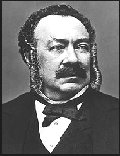 Born in Halifax, Nova Scotia, Bro. William Alexander Henry was a lawyer, politician and Supreme Court Judge. During the late 1830s he studied law and was admitted to the bar as an attorney in 1840 and a barrister in 1841. Active in politics, he was a Member of the 23rd General Assembly of Nova Scotia from 1840 to 1843 and again from 1847 to 1867. On May 11, 1864, he became Attorney General in the government of Charles Tupper. Bro. Henry attended the three Confederation conferences and enthusiastically promoted the movement at home. As a Father of Confederation, he was a delegate to the London Conference of December 1866, at which the form of confederation was finalized, and was one of the attorneys general who helped frame the language of the British North America Act. He served as Mayor of Halifax from 1870 to 1871, and in October 1875 he was appointed a judge of the newly created Supreme Court of Canada. Bro. Henry joined our lodge on March 13, 1883.
Born in Halifax, Nova Scotia, Bro. William Alexander Henry was a lawyer, politician and Supreme Court Judge. During the late 1830s he studied law and was admitted to the bar as an attorney in 1840 and a barrister in 1841. Active in politics, he was a Member of the 23rd General Assembly of Nova Scotia from 1840 to 1843 and again from 1847 to 1867. On May 11, 1864, he became Attorney General in the government of Charles Tupper. Bro. Henry attended the three Confederation conferences and enthusiastically promoted the movement at home. As a Father of Confederation, he was a delegate to the London Conference of December 1866, at which the form of confederation was finalized, and was one of the attorneys general who helped frame the language of the British North America Act. He served as Mayor of Halifax from 1870 to 1871, and in October 1875 he was appointed a judge of the newly created Supreme Court of Canada. Bro. Henry joined our lodge on March 13, 1883.
John W.H. Watts, Architect, Designer & Artist
September 16, 1850 — August 26, 1917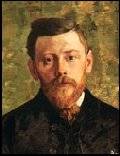 Bro. John William Hurrell Watts, born and trained in England, blurred the boundary between artist and architecture. Immigrating to Canada in 1874, he worked for the Chief Dominion Architect for 23 years. He produced illustrations for the Canadian Illustrated News, the Dominion Illustrated, George Monro Grant’s Picturesque Canada, and was the first curator for the National Gallery of Canada as well as a founding member of the Royal Canadian Academy. Ottawa lumber and railway baron J.R. Booth was so impressed with Bro. Watts' work that in 1902 he commissioned a mansion at 252 Metcalfe Street, now proudly cared for by the Laurentian Club. He designed the house at 500 Wilbrod Street for Andrew Fleck, Secretary-Treasurer, Canada Atlantic Railway in 1903, now the residence of the Algerian Embassy. The oldest Jewish Synagogue in Ottawa, which was located on King Edward Avenue, was designed in 1904. In 1925, he designed Glebe Presbyterian Church/Glebe United Church at 650 Lyon Street South. Bro. Watts was initiated into our lodge on March 13, 1883.
Bro. John William Hurrell Watts, born and trained in England, blurred the boundary between artist and architecture. Immigrating to Canada in 1874, he worked for the Chief Dominion Architect for 23 years. He produced illustrations for the Canadian Illustrated News, the Dominion Illustrated, George Monro Grant’s Picturesque Canada, and was the first curator for the National Gallery of Canada as well as a founding member of the Royal Canadian Academy. Ottawa lumber and railway baron J.R. Booth was so impressed with Bro. Watts' work that in 1902 he commissioned a mansion at 252 Metcalfe Street, now proudly cared for by the Laurentian Club. He designed the house at 500 Wilbrod Street for Andrew Fleck, Secretary-Treasurer, Canada Atlantic Railway in 1903, now the residence of the Algerian Embassy. The oldest Jewish Synagogue in Ottawa, which was located on King Edward Avenue, was designed in 1904. In 1925, he designed Glebe Presbyterian Church/Glebe United Church at 650 Lyon Street South. Bro. Watts was initiated into our lodge on March 13, 1883.
Thomas D. Green, Dominion Land Surveyor
December 21, 1857 — November 29, 1935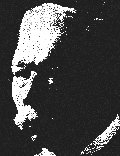 Bro. Thomas Daniel Green, was born near Alfred, Ontario, and graduated from McGill University as a B.Sc. in the class of 1880. He was a Mohawk indian, possibly the first Mohawk accredited land surveyor in Canada. On the January 7, 1885, while living in Ottawa, he was appointed an Ontario Land Surveyor and thereafter became an Alberta Land Surveyor. Sir John A. Macdonald took a deep interest in him, and for a time he was employed by the Department of the Interior. He is described as a traveller and raconteur, with a splendid command of the English language, and was a personal friend of the Hon. A.C. Rutherford, the first Premier of Alberta. From 1891 to 1893, he was assistant surveyor in the Department of Indian Affairs. Bro. Green was initiated into our lodge on March 10, 1885, and served as Secretary from 1890 to 1891.
Bro. Thomas Daniel Green, was born near Alfred, Ontario, and graduated from McGill University as a B.Sc. in the class of 1880. He was a Mohawk indian, possibly the first Mohawk accredited land surveyor in Canada. On the January 7, 1885, while living in Ottawa, he was appointed an Ontario Land Surveyor and thereafter became an Alberta Land Surveyor. Sir John A. Macdonald took a deep interest in him, and for a time he was employed by the Department of the Interior. He is described as a traveller and raconteur, with a splendid command of the English language, and was a personal friend of the Hon. A.C. Rutherford, the first Premier of Alberta. From 1891 to 1893, he was assistant surveyor in the Department of Indian Affairs. Bro. Green was initiated into our lodge on March 10, 1885, and served as Secretary from 1890 to 1891.
William Ogilvie, Dominion Land Surveyor, Fellow Royal Geographical Society
April 7, 1846 — November 13, 1912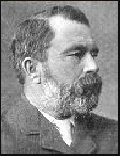 Born in Gloucester Township, Bro. William Ogilvie was a Canadian Dominion land surveyor, explorer and Commissioner of the Yukon Territory. He obtained his commission as a Dominion Land Surveyor in 1872, and spent his entire life surveying for the Department of the Interior. From 1887 to 1889, he was involved in George Mercer Dawson's exploration and survey expedition in what later became the Yukon Territory. During the Klondike Gold Rush, he surveyed the townsite of Dawson City. He became the Yukon's second Commissioner in 1898 at the height of the gold rush and was the author of 'Early Days on the Yukon (1913)'. Bro. Ogilvie was elected a fellow of the Royal Geographical Society in recognition of his pioneering northern surveys. The Ogilvie Mountains and Ogilvie River in the Northern Yukon Territory along with Ogilvie Valey in the Southern Yukon Territory are named after him. Bro. Ogilvie was initiated into our lodge on February 8, 1887.
Born in Gloucester Township, Bro. William Ogilvie was a Canadian Dominion land surveyor, explorer and Commissioner of the Yukon Territory. He obtained his commission as a Dominion Land Surveyor in 1872, and spent his entire life surveying for the Department of the Interior. From 1887 to 1889, he was involved in George Mercer Dawson's exploration and survey expedition in what later became the Yukon Territory. During the Klondike Gold Rush, he surveyed the townsite of Dawson City. He became the Yukon's second Commissioner in 1898 at the height of the gold rush and was the author of 'Early Days on the Yukon (1913)'. Bro. Ogilvie was elected a fellow of the Royal Geographical Society in recognition of his pioneering northern surveys. The Ogilvie Mountains and Ogilvie River in the Northern Yukon Territory along with Ogilvie Valey in the Southern Yukon Territory are named after him. Bro. Ogilvie was initiated into our lodge on February 8, 1887.
Capt. Agar S. A. M. Adamson, Military Commander, Distinguished Service Order
December 25, 1865 — November 21, 1929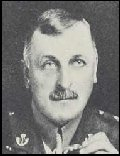 Bro. Agar Stewart Allan Masterson Adamson, constantly pushing the borders of danger and adventure, volunteered for service in South Africa during the Boer War. The grandson of Bro. William Agar Adamson (Roll No. 18), he had been a militia officer in the Governor-General's Foot Guard and became a commissioned officer in Lord Strathcona's Horse. Landing in Cape Town in May 1900, he wrote letters home to his wife, leaving a marvelous record of what he saw of men - and women - in action. In October 1916, Bro. Adamson became commanding officer of Princess Patricia's Canadian Light Infantry, successfully and skillfully leading his regiment at both Vimy Ridge and Passchendaele. He earned the D.S.O. for gallantry in action, and again left a wealth of letters. After the war he became a flying enthusiast. In 1929, his plane ditched in the Irish Sea, he contracted pneumonia, and died at the age of 63. Bro. Adamson joined our lodge on April 8, 1890.
Bro. Agar Stewart Allan Masterson Adamson, constantly pushing the borders of danger and adventure, volunteered for service in South Africa during the Boer War. The grandson of Bro. William Agar Adamson (Roll No. 18), he had been a militia officer in the Governor-General's Foot Guard and became a commissioned officer in Lord Strathcona's Horse. Landing in Cape Town in May 1900, he wrote letters home to his wife, leaving a marvelous record of what he saw of men - and women - in action. In October 1916, Bro. Adamson became commanding officer of Princess Patricia's Canadian Light Infantry, successfully and skillfully leading his regiment at both Vimy Ridge and Passchendaele. He earned the D.S.O. for gallantry in action, and again left a wealth of letters. After the war he became a flying enthusiast. In 1929, his plane ditched in the Irish Sea, he contracted pneumonia, and died at the age of 63. Bro. Adamson joined our lodge on April 8, 1890.
Albert P. Low, Geologist, Surveyor, Map Maker & Explorer, Geological Survey of Canada
May 24, 1861 — October 9, 1942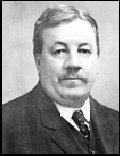 Born in Montreal, Bro. Albert Peter Low graduated from McGill University in 1882, and worked as a surveyor and explorer with the Geological Survey of Canada (GSC) in Ottawa. His most important scientific work is considered to be his expedition to study the vast, unexplored Labrador Peninsula in 1894 and 1895. He participated in an expedition to Hudson Bay in 1897, and was in charge of exploring the Labrador side of Hudson Strait. His field reports, sketches and maps are still considered today as models of accuracy. He was appointed director of GSC in 1906, and in 1907 became the first Deputy Minister of the Department of Mines. Aplowite, a transparent, pink-coloured cobalt mineral, is named in his honour. Bro. Low was also an athlete, and played for two famous hockey teams, the McGill Hockey Club, considered the first organized hockey club in the world, and the Ottawa Hockey Club. Bro. Low was initiated into our lodge October 13, 1894.
Born in Montreal, Bro. Albert Peter Low graduated from McGill University in 1882, and worked as a surveyor and explorer with the Geological Survey of Canada (GSC) in Ottawa. His most important scientific work is considered to be his expedition to study the vast, unexplored Labrador Peninsula in 1894 and 1895. He participated in an expedition to Hudson Bay in 1897, and was in charge of exploring the Labrador side of Hudson Strait. His field reports, sketches and maps are still considered today as models of accuracy. He was appointed director of GSC in 1906, and in 1907 became the first Deputy Minister of the Department of Mines. Aplowite, a transparent, pink-coloured cobalt mineral, is named in his honour. Bro. Low was also an athlete, and played for two famous hockey teams, the McGill Hockey Club, considered the first organized hockey club in the world, and the Ottawa Hockey Club. Bro. Low was initiated into our lodge October 13, 1894.
Gordon C. Edwards, Lumber Merchant, Member of Parliament
November 15, 1866 — November 2, 1946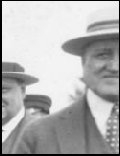 Born in Thurso, Quebec, Bro. Gordon Cameron Edwards became a member of First Baptist Church in 1883, and was a generous benefactor throughout his lifetime. He helped to found the Laurentian Club, he was Liberal Member of Parliament for the City of Ottawa from 1926 to 1930, and director of the Canadian Bank of Commerce, the Canada Cement Company, the Canadian International Paper Company, and the Ottawa Valley Trust Company. In 1921, Bro. Edwards inherited 24 Sussex Drive, and was the last private citizen to live there. 24 Sussex Drive became the Official Residence of the Prime Minister of Canada in 1950. It was said at his funeral that 'he was known across the Dominion, and nowhere more than in his own city, as a supporter of good causes'. Bro. Edwards joined our lodge on October 13, 1894.
Born in Thurso, Quebec, Bro. Gordon Cameron Edwards became a member of First Baptist Church in 1883, and was a generous benefactor throughout his lifetime. He helped to found the Laurentian Club, he was Liberal Member of Parliament for the City of Ottawa from 1926 to 1930, and director of the Canadian Bank of Commerce, the Canada Cement Company, the Canadian International Paper Company, and the Ottawa Valley Trust Company. In 1921, Bro. Edwards inherited 24 Sussex Drive, and was the last private citizen to live there. 24 Sussex Drive became the Official Residence of the Prime Minister of Canada in 1950. It was said at his funeral that 'he was known across the Dominion, and nowhere more than in his own city, as a supporter of good causes'. Bro. Edwards joined our lodge on October 13, 1894.
Edgar L. Horwood, Architect
circa 1867 — February 16, 1957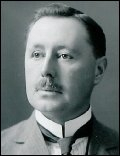 W. Bro. Edgar Lewis Horwood came to Ottawa from New York in 1893 and became Chief Architect of the Department of Public Works. In 1895, he designed the American Room, part of the Great Library of Osgoode Hall in Toronto. He is credited with designing Mutchmor Public School in 1895, the former Sun Life Building in 1897, First Avenue Public School in 1898, the Carnegie Library on Metcalfe Street in 1907, and an addition to Lisgar Collegiate Institute in 1907. His other works include St. Luke's Hospital, the original Gilmore House, the Citizen Block, the Cory Block, the Ritz Hotel, the residences of George Goodwin and William Southam in Sandy Hill, the Bank Street Chambers and three of the four corners at the intersection of Bank Street and Sparks Street. In 1912, W. Bro. Horwood designed the Beaux-Arts Customs House in Montreal and the Chateau Monsarrat in Gatineau, Quebec in 1930. Together with Bro. Clarence Burritt (Roll No. 381), he designed the Justice Building in 1935. W. Bro. Horwood joined our lodge on December 11, 1894 and served as Worshipful Master in 1901. In 1951, he was presented with a long service medal for 50 years as a Past Master.
W. Bro. Edgar Lewis Horwood came to Ottawa from New York in 1893 and became Chief Architect of the Department of Public Works. In 1895, he designed the American Room, part of the Great Library of Osgoode Hall in Toronto. He is credited with designing Mutchmor Public School in 1895, the former Sun Life Building in 1897, First Avenue Public School in 1898, the Carnegie Library on Metcalfe Street in 1907, and an addition to Lisgar Collegiate Institute in 1907. His other works include St. Luke's Hospital, the original Gilmore House, the Citizen Block, the Cory Block, the Ritz Hotel, the residences of George Goodwin and William Southam in Sandy Hill, the Bank Street Chambers and three of the four corners at the intersection of Bank Street and Sparks Street. In 1912, W. Bro. Horwood designed the Beaux-Arts Customs House in Montreal and the Chateau Monsarrat in Gatineau, Quebec in 1930. Together with Bro. Clarence Burritt (Roll No. 381), he designed the Justice Building in 1935. W. Bro. Horwood joined our lodge on December 11, 1894 and served as Worshipful Master in 1901. In 1951, he was presented with a long service medal for 50 years as a Past Master.
Major D.I. Vernon Eaton, Civil Engineer, Surveyor, Militia & Army Officer
September 19, 1869 — April 11, 1917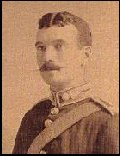 Born near Truro, N.S., Bro. Daniel Isaac Vernon Eaton secured an appointment with the Geological Survey of Canada and between 1893 and 1895, accompanied Bro. Albert Peter Low (Roll No. 222) to prepare a complete survey of the Labrador peninsula. After settling in Ottawa, he joined the Ottawa Field Battery and went overseas in January 1900 to fight in the South African War. In 1915, Bro. Eaton joined the Canadian Expeditionary Force and took the 8th Brigade to France. Within a few days he was involved in actions in the Ypres Salient. The following spring, the brigade was poised to take part in the bombardment of Vimy Ridge. Early in the evening of April 8th, he was visiting his batteries near Berthonval Farm, and was severely wounded. He died three days later. Bro. Eaton was initiated into our lodge on December 11, 1894.
Born near Truro, N.S., Bro. Daniel Isaac Vernon Eaton secured an appointment with the Geological Survey of Canada and between 1893 and 1895, accompanied Bro. Albert Peter Low (Roll No. 222) to prepare a complete survey of the Labrador peninsula. After settling in Ottawa, he joined the Ottawa Field Battery and went overseas in January 1900 to fight in the South African War. In 1915, Bro. Eaton joined the Canadian Expeditionary Force and took the 8th Brigade to France. Within a few days he was involved in actions in the Ypres Salient. The following spring, the brigade was poised to take part in the bombardment of Vimy Ridge. Early in the evening of April 8th, he was visiting his batteries near Berthonval Farm, and was severely wounded. He died three days later. Bro. Eaton was initiated into our lodge on December 11, 1894.
John J. Codville, Wholesale Grocer
November 19, 1851 — circa 1915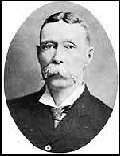 Born in Quebec City, Bro. John James Codville invested an inheritance in 1873 in a new wholesale grocery firm of Thompson, Codville and Company. The company prospered by offering basic staple items rather than luxuries. In 1881, acting on the business opportunities opened up in the frontier city of Winnipeg with the arrival of the Canadian Pacific Railway, he transferred the base of operations of his company to Winnipeg. By 1901, the firm was known as The Codville Company, with branches opened across the prairies, in Calgary, Saskatoon, Moosejaw and Brandon. Bro. Codville was a founding member of the St. Charles Country Club in Winnipeg. Around 1914, the Codville family moved to Ottawa, into a home designed by Werner Ernst Noffke at 443 Daly Street, which today serves as the residence of the Polish Embassy. Bro. Codville joined our lodge on January 18, 1885.
Born in Quebec City, Bro. John James Codville invested an inheritance in 1873 in a new wholesale grocery firm of Thompson, Codville and Company. The company prospered by offering basic staple items rather than luxuries. In 1881, acting on the business opportunities opened up in the frontier city of Winnipeg with the arrival of the Canadian Pacific Railway, he transferred the base of operations of his company to Winnipeg. By 1901, the firm was known as The Codville Company, with branches opened across the prairies, in Calgary, Saskatoon, Moosejaw and Brandon. Bro. Codville was a founding member of the St. Charles Country Club in Winnipeg. Around 1914, the Codville family moved to Ottawa, into a home designed by Werner Ernst Noffke at 443 Daly Street, which today serves as the residence of the Polish Embassy. Bro. Codville joined our lodge on January 18, 1885.
Lieutenant-Colonel Henry W. Bowie, House of Commons Sergeant-at-Arms
circa 1855 — unknown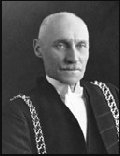 Bro. Henry William Bowie held the position of Deputy Sergeant-at-Arms of the House of Commons from 1891 until his appointment as Sergeant-at-Arms on March 5, 1918, and continued in that role for 12 years. Appointed by Letters Patent, he performed many ceremonial and administrative duties and, as a commissioner of oaths, was one of the officers who administered the oath of allegiance to newly elected Members. Bearing the Mace, Bro. Bowie preceded the Speaker entering and leaving the Chamber, and occupied a desk at the Bar of the House when the House was sitting. He preserved order in the galleries, lobbies, and corridors and was responsible for taking into custody strangers who misbehaved in the galleries. Bro. Bowie joined our lodge on December 13, 1898.
Bro. Henry William Bowie held the position of Deputy Sergeant-at-Arms of the House of Commons from 1891 until his appointment as Sergeant-at-Arms on March 5, 1918, and continued in that role for 12 years. Appointed by Letters Patent, he performed many ceremonial and administrative duties and, as a commissioner of oaths, was one of the officers who administered the oath of allegiance to newly elected Members. Bearing the Mace, Bro. Bowie preceded the Speaker entering and leaving the Chamber, and occupied a desk at the Bar of the House when the House was sitting. He preserved order in the galleries, lobbies, and corridors and was responsible for taking into custody strangers who misbehaved in the galleries. Bro. Bowie joined our lodge on December 13, 1898.
J. Edgar Birch, Organist, Conductor & Teacher
August 25, 1862 — October 23, 1931
Bro. John Edgar Birch, born in Cavesham, Oxfordshire, was a chorister in the Chapel Royal and studied in London. He emigrated to Canada in 1891 to teach at Trinity College School and moved to Montreal as organist-choirmaster at Christ Church Cathedral. In 1894, he was one of the founders of the Dominion College of Music. Bro. Birch settled in Ottawa in 1895 as principal of the Canadian College of Music and organist-choirmaster of All Saints Church. He became the music director of the Schubert Club that year and in 1897 organized the third Ottawa Choral Society, originally formed by Bro. Herbert Fripp (Roll No. 51). He conducted the first concert in January 1898, and remained conductor until 1914. He was an organist and teacher in Ottawa until his death. Bro. Birch joined our lodge on February 14, 1899.
Dr. Charles H. Higgins, Veterinary Surgeon
circa 1875 — circa 1955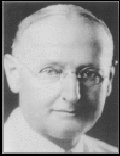 Bro. Charles Henry Higgins was born in Newtonville, Massachusetts and attended the School of Veterinary Science at McGill University. Graduating in 1896, he left to pursue a career in Jamaica, before returning to practice in Massachusetts. In 1899 he was offered a position in Montreal as the Pathologist to the Department of Agriculture. His duties were divided between McGill and the Royal Victoria Hospital and during this time he became closely associated with Dr. John McCrae, the author of In Flanders Fields. Bro Higgins work led to the establishment of the Biological Laboratory in Ottawa, situated on the Experimental Farm. He was the first veterinarian as a laboratory pathologist when the Health of Animals Branch was formed in 1902. In 1917 he accepted a position with Lederle Company and eventually moved back to the United States to take charge of their New York office, becoming Director of Professional Services. Bro. Higgins joined our lodge on April 14, 1903, and served as Secretary in 1906.
Bro. Charles Henry Higgins was born in Newtonville, Massachusetts and attended the School of Veterinary Science at McGill University. Graduating in 1896, he left to pursue a career in Jamaica, before returning to practice in Massachusetts. In 1899 he was offered a position in Montreal as the Pathologist to the Department of Agriculture. His duties were divided between McGill and the Royal Victoria Hospital and during this time he became closely associated with Dr. John McCrae, the author of In Flanders Fields. Bro Higgins work led to the establishment of the Biological Laboratory in Ottawa, situated on the Experimental Farm. He was the first veterinarian as a laboratory pathologist when the Health of Animals Branch was formed in 1902. In 1917 he accepted a position with Lederle Company and eventually moved back to the United States to take charge of their New York office, becoming Director of Professional Services. Bro. Higgins joined our lodge on April 14, 1903, and served as Secretary in 1906.
Noel J. Ogilvie, Geodesist, Veterans Jubilee Medal
circa 1880 — August 15, 1967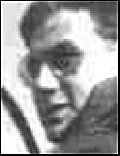 Bro. Noel John Ogilvie, was Dominion Geodesist from 1922 to 1947, and International Boundary Commissioner from 1931 to 1947. Noel Peak, inside the BC-Alaska boundary at the head of Triumph Glacier, was named in his honour on March 24, 1924. As Director of the Geodesic Survey of Canada and President of the National Committee of Canada of the International Geodetic and Geophysical Union, he represented Canada at the Second General Assembly of the Geodetic and Geophysical Union in Madrid in September 1924. In January 1940, he presented 'Precise Astronomic Positions on a Provincial Boundary' to the Royal Astronomical Society of Canada. He assisted in the joint report upon the survey and demarcation of the boundary between the United States and Canada. Bro. Ogilvie was initiated into our lodge on January 8, 1907. He was a 50 year Veterans Jubilee Medal recipient and received a 60 year long-service award in January 1967.
Bro. Noel John Ogilvie, was Dominion Geodesist from 1922 to 1947, and International Boundary Commissioner from 1931 to 1947. Noel Peak, inside the BC-Alaska boundary at the head of Triumph Glacier, was named in his honour on March 24, 1924. As Director of the Geodesic Survey of Canada and President of the National Committee of Canada of the International Geodetic and Geophysical Union, he represented Canada at the Second General Assembly of the Geodetic and Geophysical Union in Madrid in September 1924. In January 1940, he presented 'Precise Astronomic Positions on a Provincial Boundary' to the Royal Astronomical Society of Canada. He assisted in the joint report upon the survey and demarcation of the boundary between the United States and Canada. Bro. Ogilvie was initiated into our lodge on January 8, 1907. He was a 50 year Veterans Jubilee Medal recipient and received a 60 year long-service award in January 1967.
Dr. Delorme D. Cairnes, Geologist, Geological Survey of Canada
circa 1879 — circa 1917
Bro. Delorme Donaldson Cairnes was a graduate of Queen's University in Kingston, Ontario. Although his career was shortened by an untimely death, his exploration added enormous knowledge to understanding the Yukon's geology. He was the Geological Survey's Yukon specialist from 1905 until his accidental death by drowning in a lake near Ottawa in 1917 at the age of 37. Tribute was paid to Bro. Cairnes by naming a prominent peak in his honour. Mount Cairnes can be seen looking south from the Alaska Highway between Haines Junction and Destruction Bay. A second Mount Cairnes was named in the 1960s. It rises between Cairnes Creek and Black Mike Creek in the Ogilvie Mountains (Roll No. 178) at the headwaters of the North Klondike River. Bro. Cairnes was initiated into our lodge on March 25, 1907.
Clarence J. Burritt, Architect
circa 1874 — February 1, 1956
Bro. Clarence James Burritt was born in Toronto, Ontario, and studied architecture at the University of Toronto. He designed the Palladian home of E.B. Eddy in Hull in 1901 which eventually became the site of Standish Hall. In 1914, he designed St. Paul’s Methodist Church in the Palladian Revival style. The church was converted to the Glebe Community Centre in 1974. Most significantly, in 1927 he designed the Confederation Building located on Parliament Hill which today is home both to civil servants and to a number of MPs and ministers. 190 Coltrin Road was designed in 1929 for the son and daughter of G. H. Millen, former president of the E. B. Eddy Company. After 1948, it served as the residence of the High Commissioner of Pakistan. In 1935, together with Bro. Edgar Horwood (Roll No. 225), he designed the Justice Building, which now houses offices of Members of Parliament. Bro. Burritt was initiated into our lodge on April 9, 1907.
William F. Ratz, Dominion Land Surveyor
circa 1884 — February 6, 1909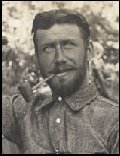 Bro. William Franklin Ratz, engineer-in-charge of the Taku, Whiting and Stikine Rivers portions of the International Boundary Survey had a tragically short career, both professionally and masonically. He was employed on the Alaska survey in 1905 and was engaged on the topographical survey between Whiting and Stikine rivers. His success in carrying this to completion in a relatively short time is a testimony of his capability as a surveyor as well as to his personal energy. Bro. Ratz was initiated into our lodge on January 12, 1909 and died 28 days later at the age of 25. Mount Ratz, located just west of the Stikine River, is named in his honour. It is the highest peak in the Stikine Icecap and of the Boundary Ranges which in turn form part of the Coast Mountains, and is classed as one of Canada's Ultra Peaks.
Bro. William Franklin Ratz, engineer-in-charge of the Taku, Whiting and Stikine Rivers portions of the International Boundary Survey had a tragically short career, both professionally and masonically. He was employed on the Alaska survey in 1905 and was engaged on the topographical survey between Whiting and Stikine rivers. His success in carrying this to completion in a relatively short time is a testimony of his capability as a surveyor as well as to his personal energy. Bro. Ratz was initiated into our lodge on January 12, 1909 and died 28 days later at the age of 25. Mount Ratz, located just west of the Stikine River, is named in his honour. It is the highest peak in the Stikine Icecap and of the Boundary Ranges which in turn form part of the Coast Mountains, and is classed as one of Canada's Ultra Peaks.
The Honourable Albert E. Matthews, Lieutenant Governor of Ontario
May 17, 1873 — December 16, 1949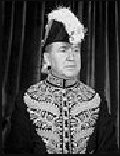 Born in Lindsay, Ontario, Bro. Albert Edward Matthews became an investment broker in Toronto, and later a company director. He was a member of the McMaster Board of Governors from 1923 to 1948 in Hamilton and became Chairman of the University in 1949. Bro. Matthews served as the 16th Lieutenant Governor of Ontario from 1937 to 1946. He took office during the Great Depression while Mitchell Hepburn was Premier of Ontario. Hepburn had come to office promising to show austerity by curtailing the perks and privileges of, among others, the lieutenant-governor. As a result, Bro. Matthews did little entertaining but he gave vast sums of money to charities to help ease the burden of the Depression. Bro. Matthews was initiated into our lodge on March 13, 1909.
Born in Lindsay, Ontario, Bro. Albert Edward Matthews became an investment broker in Toronto, and later a company director. He was a member of the McMaster Board of Governors from 1923 to 1948 in Hamilton and became Chairman of the University in 1949. Bro. Matthews served as the 16th Lieutenant Governor of Ontario from 1937 to 1946. He took office during the Great Depression while Mitchell Hepburn was Premier of Ontario. Hepburn had come to office promising to show austerity by curtailing the perks and privileges of, among others, the lieutenant-governor. As a result, Bro. Matthews did little entertaining but he gave vast sums of money to charities to help ease the burden of the Depression. Bro. Matthews was initiated into our lodge on March 13, 1909.
Herbert Sanders, Doctor of Music
September 20, 1878 — May 18, 1938
Bro. Herbert Sanders was an organist, choir conductor, composer, teacher, writer, and pianist. Born in Wolverhampton, England, he moved to Canada in 1907. He gave organ recitals across Canada and was regarded as an excellent accompanist. He also directed the Ottawa Oratorio Society and served as president of the Ottawa Arts and Letters Club. In 1929 he accepted a unique position as music director of the new Tudor Hall in the J.A. Ogilvy Department Store in Montreal. Bro. Sanders composed many sacred songs, anthems and organ pieces. Twice he was awarded the Clemson Gold Medal for composition by the American Guild of Organists. The National Library of Canada has a collection of his manuscripts. Bro. Sanders joined our lodge on October 12, 1909.
Frederick W. Taylor, Professional Hockey Player, Order of the British Empire
June 23, 1884 — June 9, 1979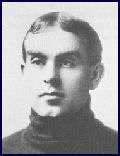 Bro. Frederick Wellington 'Cyclone' Taylor was absolutely the grandest star and one of the most sought after hockey players of his time. Born in Tara, Ontario, he began playing hockey at the age of twelve and went on to play in two Stanley Cup championship games in 1909 and 1915, and scored 205 goals over a twenty-one year career. He played for the original Ottawa Senators from 1907 to 1909. During his playing days he was often referred to as 'the Ty Cobb of hockey'. Governor General Albert Grey gave him the nickname 'Cyclone', based on his skating ability. Bro. Taylor was inducted into The Hockey Hall of Fame in 1945. In 1949, he was named as an Officer of the Order of the British Empire for outstanding service to the country and community. Bro. Taylor was initiated into our lodge on February 13, 1912.
Bro. Frederick Wellington 'Cyclone' Taylor was absolutely the grandest star and one of the most sought after hockey players of his time. Born in Tara, Ontario, he began playing hockey at the age of twelve and went on to play in two Stanley Cup championship games in 1909 and 1915, and scored 205 goals over a twenty-one year career. He played for the original Ottawa Senators from 1907 to 1909. During his playing days he was often referred to as 'the Ty Cobb of hockey'. Governor General Albert Grey gave him the nickname 'Cyclone', based on his skating ability. Bro. Taylor was inducted into The Hockey Hall of Fame in 1945. In 1949, he was named as an Officer of the Order of the British Empire for outstanding service to the country and community. Bro. Taylor was initiated into our lodge on February 13, 1912.
Lorenzo N. Wadlin, Civil Engineer, Dominion Land Surveyor
May 29, 1883 — January 1, 1954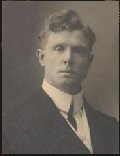 Bro. Lorenzo Norette Wadlin was born in Beaver Harbour, New Brunswick, graduating as a Civil Engineer in 1908. In September 1908, he was employed as a draughtsman by the Dominion of Canada and obtained his commission as a Dominion Land Surveyor in 1913. Wadlin Lake near Fort Vermillion, Alberta was surveyed by him and has carried his name since 1916. Enlisting in 1915, Bro. Wadlin was a Lieutenant in the 4th Overseas Pioneer Battalion. After the war, he steamed from Montreal on the Montcalm for the dedication ceremonies of the new monument at Vimy Ridge on July 26, 1936. He is the donor of the L.N. Wadlin Scholarship in Mathematics at Carleton University in Ottawa, as well as the Lorenzo N. Wadlin Scholarship in Mechanical Engineering at the University of New Brunswick. Bro. Wadlin was initiated into our lodge on November 12, 1912.
Bro. Lorenzo Norette Wadlin was born in Beaver Harbour, New Brunswick, graduating as a Civil Engineer in 1908. In September 1908, he was employed as a draughtsman by the Dominion of Canada and obtained his commission as a Dominion Land Surveyor in 1913. Wadlin Lake near Fort Vermillion, Alberta was surveyed by him and has carried his name since 1916. Enlisting in 1915, Bro. Wadlin was a Lieutenant in the 4th Overseas Pioneer Battalion. After the war, he steamed from Montreal on the Montcalm for the dedication ceremonies of the new monument at Vimy Ridge on July 26, 1936. He is the donor of the L.N. Wadlin Scholarship in Mathematics at Carleton University in Ottawa, as well as the Lorenzo N. Wadlin Scholarship in Mechanical Engineering at the University of New Brunswick. Bro. Wadlin was initiated into our lodge on November 12, 1912.
Percy D. Wilson, Barrister at Law, King's Counsel, Veterans Jubilee Medal
circa 1889 — May 11, 1974
W. Bro. Percy Dixon Wilson, born in Saint John, New Brunswick, attended McGill University and was called to the bar in 1913. While in Ottawa, he was elected President of the Ottawa Valley Graduate Society of McGill University. In 1934, he was created a King's Counsel and was appointed Official Guardian of Ontario in 1936, a position he held for over 20 years. His real interest in the problems of education, stemmed from a greater interest in young person themselves. He made himself accessible to students, young barristers and to young persons in trouble, assisting them by his straight forward and wise counsel. W. Bro. Wilson was initiated into our lodge on September 8, 1914 and served as Worshipful Master in 1927. In 1964, he was a 50 year Veterans Jubilee Medal recipient.
Captain Edmund M. Phillips, Canadian Overseas Expeditionary Force, Football Player
April 21, 1880 — July 6, 1942
Bro. Edmund Morrison Phillips was born in Brockville, Ontario and grew up in North Bay. He served as a Lieutenant in the Canadian Army Service Corps and a Captain with the Canadian Overseas Expeditionary Force in France in 1918. His name is engraved on a Memorial Tablet in honour of members from Brockville Lodges who served in the Great War, 1914-1919. Bro. Phillips was quite a sports figure in Ottawa before WWI; an all-round athlete involved with rowing, hockey, lacrosse and aquatics. From 1903 to 1905, he played for the Ottawa Rough Riders, and in 1909, he was the winner of the Ottawa Labour Day Regatta open eights. Employed by the Canadian Ministry of Indian and Northern Affairs, he travelled extensively in the Western Arctic in the 1920s and 1930s. Bro. Phillips joined our lodge on February 9, 1915.
William Carswell, Grand Master of the Grand Lodge of Quebec
circa 1884 — May 15, 1949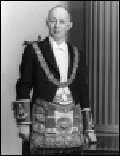 Born in Newcastle-upon-Tyne, England, M.W. Bro. William Carswell spent his youth in Rothesay, Scotland. Graduating from the University of Edinburgh, he gained his papers in accounting and arrived in Canada in 1908. Work as an auditor for one of Montreal's larger accounting firms took him to Ottawa. There he met and married Edna Mary McKinley, daughter of William McKinley, noted Ottawa businessman and partner in McKinley and Northwood, plumbers and steamfitters. By 1920 they were back in Montreal. Having secured his CA designation in Ontario, he was hired by Northern Electric. Over the next 29 years he rose to the office of Vice President of Accounts and Finance. M.W. Bro. Carswell served as Grand Master of the Grand Lodge of Quebec from 1940 to 1942. At the regular meeting of December 8, 1942, M.W. Bro. William Carswell, accompanied by M.W. Bro. John Albert Dobbie, Past Grand Master of the Grand Lodge of Canada in Ontario, was present for the initiation of his son, Flight-Lieutenant James Kirkwood Carswell. The obligation was given by M.W. Bro. Carswell himself. M.W. Bro. Carswell was initiated into our lodge on October 12, 1915 and passed to the Grand Lodge Above on May 15, 1949.
Born in Newcastle-upon-Tyne, England, M.W. Bro. William Carswell spent his youth in Rothesay, Scotland. Graduating from the University of Edinburgh, he gained his papers in accounting and arrived in Canada in 1908. Work as an auditor for one of Montreal's larger accounting firms took him to Ottawa. There he met and married Edna Mary McKinley, daughter of William McKinley, noted Ottawa businessman and partner in McKinley and Northwood, plumbers and steamfitters. By 1920 they were back in Montreal. Having secured his CA designation in Ontario, he was hired by Northern Electric. Over the next 29 years he rose to the office of Vice President of Accounts and Finance. M.W. Bro. Carswell served as Grand Master of the Grand Lodge of Quebec from 1940 to 1942. At the regular meeting of December 8, 1942, M.W. Bro. William Carswell, accompanied by M.W. Bro. John Albert Dobbie, Past Grand Master of the Grand Lodge of Canada in Ontario, was present for the initiation of his son, Flight-Lieutenant James Kirkwood Carswell. The obligation was given by M.W. Bro. Carswell himself. M.W. Bro. Carswell was initiated into our lodge on October 12, 1915 and passed to the Grand Lodge Above on May 15, 1949.
Major William C. Murdie, Civil Engineer, Dominion Land Surveyor
July 1, 1891 — April 13, 1965
Born in Seaforth, Ontario, Bro. William Campbell Murdie graduated from the University of Toronto in Civil Engineering in 1914 and was commissioned as a Dominion Land Surveyor in 1916. He went overseas with the 9th Field Company of Canadian Engineers where he served with distinction in France and Belgium. For his gallantry in WWI, he was awarded the Military Cross at Vimy Ridge. During WWII, Bro. Murdie re-enlisted and was appointed a Staff Major at the Canadian Engineers Training Centre at Petawawa. Following the war, he transferred to the Canadian Hydrographic Service where he remained until his retirement in 1957. He was a Fellow of the Royal Geographical Society and a Life Member of the Engineering Institute of Canada. Bro. Murdie was initiated into our lodge on January 24, 1916.
John W. Bearder, Doctor of Music, Grand Organist
December 26, 1873 — May 6, 1958
Born in Yorkshire, England, V.W. Bro. John William Bearder was an organist and composer. From the age of 12 he held the first of many positions as organist-choirmaster in English churches. In Canada he was organist from 1907 to 1913 in Sherbrooke, Quebec, at St Peter's Anglican Church, and from 1913 to 1950 in Ottawa at All Saints Anglican Church. V.W. Bro. Bearder composed and arranged many songs and choral pieces for church use and also wrote for violin and piano. Most of his works remain in manuscript, although his Communion Service in B Flat, Morning Service, and Evening Service were published. Several of his songs received public performance. V.W. Bro. Bearder joined our lodge on November 14, 1916. He was Grand Organist from 1927 to 1928.
Silas R. Allen, Canadian Bank Note Company Engraver
circa 1888 — May 14, 1958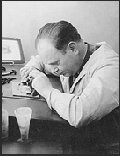 An Ottawa native, Bro. Silas Robert Allen joined the Canadian Bank Note Company in 1922, where he remained for 35 years. During these years, he engraved 64 Canadian stamps, the first of which was issued in 1928. Before his time, all Canadian stamps were engraved in New York. After the Second World War, the Canadian Bank Note Company decided to engrave all Canadian stamps in Ottawa. During the following decade, he engraved more than half of these. One of his favourite works was the portrait of Queen Elizabeth II, which he engraved for the series of definitive stamps issued in 1954. Bro. Allen was initiated into our lodge on February 15, 1918.
An Ottawa native, Bro. Silas Robert Allen joined the Canadian Bank Note Company in 1922, where he remained for 35 years. During these years, he engraved 64 Canadian stamps, the first of which was issued in 1928. Before his time, all Canadian stamps were engraved in New York. After the Second World War, the Canadian Bank Note Company decided to engrave all Canadian stamps in Ottawa. During the following decade, he engraved more than half of these. One of his favourite works was the portrait of Queen Elizabeth II, which he engraved for the series of definitive stamps issued in 1954. Bro. Allen was initiated into our lodge on February 15, 1918.
Oswald S. Finnie, Civil Engineer, Department of the Interior
circa 1877 — January 2, 1948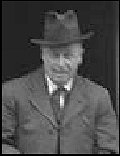 Bro. Oswald Sterling Finnie was an important figure in northern administration. After a career in the Yukon, he became Chief Mining Inspector of the Department of the Interior and second-in-command in the large Mining Lands and Yukon Branch. Following the Great War, with renewed threats to Canadian Arctic sovereignty, widespread concern over fragile northern wildlife, and the discovery of oil at Norman Wells, it was decided that the scattered and unfocused northern functions of the department were worthy of an independent, comprehensive unit and the Northwest Territories and Yukon Branch was established in 1921 to meet that need. Bro. Finnie was chosen as its first director and helped set the tone of an enlarged and coordinated federal presence in the North. Bro. Finnie was initiated into our lodge on February 1, 1919.
Bro. Oswald Sterling Finnie was an important figure in northern administration. After a career in the Yukon, he became Chief Mining Inspector of the Department of the Interior and second-in-command in the large Mining Lands and Yukon Branch. Following the Great War, with renewed threats to Canadian Arctic sovereignty, widespread concern over fragile northern wildlife, and the discovery of oil at Norman Wells, it was decided that the scattered and unfocused northern functions of the department were worthy of an independent, comprehensive unit and the Northwest Territories and Yukon Branch was established in 1921 to meet that need. Bro. Finnie was chosen as its first director and helped set the tone of an enlarged and coordinated federal presence in the North. Bro. Finnie was initiated into our lodge on February 1, 1919.
William S. McClenahan, Dominion Observatory of Canada, Royal Astronomical Society of Canada
July 14, 1892 — February 17, 1968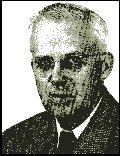 Born in Appleby, Ontario, W. Bro. William Stanley McClenahan graduated with honours in mathematics and physics from the University of Toronto in 1914. He joined the staff of the Dominion Observatory of Canada, and became Chief of the Positional Astronomy Division, retiring in 1957 after 43 years of service. Scientifically, he was a careful observer and made thousands of transit observations. As Division Chief, W. Bro. McClenahan prepared for the publication of observations dating back to 1911 for submission to the International Astronomical Union. Based on U.S. Naval Observatory plans, he directed the design and completion of the Ottawa Photographic Zenith Tube, in 1951. Under his guidance, the continuous time signal from the observatory was modernized and provided with a voice announcement each minute. After WWII, he travelled to the U.S.S.R. to represent Canada at the reopening of the Pulkova Observatory. W. Bro. McClenahan was initiated into our lodge on May 26, 1919 and served as Worshipful Master in 1935.
Born in Appleby, Ontario, W. Bro. William Stanley McClenahan graduated with honours in mathematics and physics from the University of Toronto in 1914. He joined the staff of the Dominion Observatory of Canada, and became Chief of the Positional Astronomy Division, retiring in 1957 after 43 years of service. Scientifically, he was a careful observer and made thousands of transit observations. As Division Chief, W. Bro. McClenahan prepared for the publication of observations dating back to 1911 for submission to the International Astronomical Union. Based on U.S. Naval Observatory plans, he directed the design and completion of the Ottawa Photographic Zenith Tube, in 1951. Under his guidance, the continuous time signal from the observatory was modernized and provided with a voice announcement each minute. After WWII, he travelled to the U.S.S.R. to represent Canada at the reopening of the Pulkova Observatory. W. Bro. McClenahan was initiated into our lodge on May 26, 1919 and served as Worshipful Master in 1935.
Percy A. Taverner, Ornithologist & Taxidermist
June 10, 1875 — May 9, 1947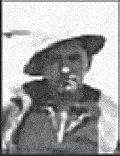 Born in Guelph, Ontario, Bro. Percy Algernon Taverner first earned a living as an architectural draughtsman while studying birds in his spare time. A self-taught naturalist, he was the first ornithologist at the National Museum of Canada, now the Canadian Museum of Nature, and served as Assistant Naturalist and Curator. He became Chief of the Division of Ornithology in 1936, and retired in 1942 as Honorary Curator of Ornithology. Bro. Taverner helped establish Point Pelée National Park and a number of bird sanctuaries across Canada, including Bonaventure Island and Percé Rock in the Gulf of St. Lawrence. His ornithological writings culminated in Birds of Canada in 1934. The Taverner Cup, a 24 hour competitive birdathon held in eastern Ontario and western Quebec, is named after him. The Timberline Sparrow was given the name Spizella taverneri in his honour. Bro. Taverner joined our lodge on March 9, 1920.
Born in Guelph, Ontario, Bro. Percy Algernon Taverner first earned a living as an architectural draughtsman while studying birds in his spare time. A self-taught naturalist, he was the first ornithologist at the National Museum of Canada, now the Canadian Museum of Nature, and served as Assistant Naturalist and Curator. He became Chief of the Division of Ornithology in 1936, and retired in 1942 as Honorary Curator of Ornithology. Bro. Taverner helped establish Point Pelée National Park and a number of bird sanctuaries across Canada, including Bonaventure Island and Percé Rock in the Gulf of St. Lawrence. His ornithological writings culminated in Birds of Canada in 1934. The Taverner Cup, a 24 hour competitive birdathon held in eastern Ontario and western Quebec, is named after him. The Timberline Sparrow was given the name Spizella taverneri in his honour. Bro. Taverner joined our lodge on March 9, 1920.
Brigadier-General William St. P. Hughes, D.S.O., Superintendent Canadian Penitentiary System
June 2, 1864 — June 1, 1940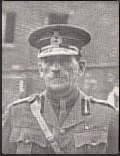 Born in Cartwright Township, Ontario, Bro. William St. Pierre Hughes, brother of Sir Samuel Hughes, served with the 90th Regiment in the Northwest Rebellion of 1885, at the battles of Fish Creek and Batoche, and was a member of the expedition sent after Indian chief, Mistahimaskwa (Big Bear). Awarded the Northwest Canada Medal in 1885, Bro. Hughes was appointed as secretary to the warden of Kingston Penitentiary in 1893, and in 1913 he became the first Superintendent of the Canadian Penitentiary System. In May of 1915, he was the first Commanding Officer of the 21st Battalion which went overseas. Some 3,328 were killed, wounded or went missing in action, eleven battle honours graced its colours, and over 300 medals and citations were earned. He was awarded the Distinguished Service Order in 1917. Bro. Hughes joined our lodge on May 11, 1920.
Born in Cartwright Township, Ontario, Bro. William St. Pierre Hughes, brother of Sir Samuel Hughes, served with the 90th Regiment in the Northwest Rebellion of 1885, at the battles of Fish Creek and Batoche, and was a member of the expedition sent after Indian chief, Mistahimaskwa (Big Bear). Awarded the Northwest Canada Medal in 1885, Bro. Hughes was appointed as secretary to the warden of Kingston Penitentiary in 1893, and in 1913 he became the first Superintendent of the Canadian Penitentiary System. In May of 1915, he was the first Commanding Officer of the 21st Battalion which went overseas. Some 3,328 were killed, wounded or went missing in action, eleven battle honours graced its colours, and over 300 medals and citations were earned. He was awarded the Distinguished Service Order in 1917. Bro. Hughes joined our lodge on May 11, 1920.
Cecil H. Ney, Civil Engineer, Geodesist, Order of the British Empire
December 21, 1890 — August 5, 1972
Bro. Cecil Herman 'Marsh' Ney was born in Bradford, Ontario, and graduated from the University of Toronto in 1916. He enlisted in the Royal Flying Corps, and served two and one-half years overseas. He was awarded an M.B.E. (Civil Division) for his war-time work on aerial navigation in polar regions. Having been admitted to practice as a Dominion Land Surveyor in 1918, Bro. Ney was on the staff of the Geodetic Survey of Canada for 35 years. One of his most notable contributions to surveying in Ontario, was the astronomic determination of two critical points for the eventual survey of the Ontario-Manitoba boundary. He retired in 1955, and established himself in practice as an Ontario Land Surveyor in Ottawa. Ney Lake, north-east of Fort McMurray, Alberta, is named after him. Bro. Ney joined our lodge on May 10, 1921.
Dr. Rudolph M. Anderson, Zoologist & Explorer
June 30, 1876 — June 22, 1961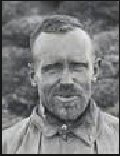 Born in Decorah, Iowa, Bro. Rudolph Martin Anderson received a Ph.D. from the University of Iowa in 1906; his dissertation was entitled The Birds of Iowa. He was a veteran of the Spanish-American War, serving as a corporal in the 52nd Iowa Volunteer Infantry. Bro. Anderson participated in the Stefansson-Anderson Arctic Expedition, which explored Alaska and the northern Yukon from 1908 to 1912, and was part of the Canadian Arctic Expedition led by Vilhjalmur Stefansson from 1913 to 1916. He was involved in all aspects of the Expedition, from ordering food, to packing the ships, navigating and even acting as captain. In 1916, he assisted in the development of the Migratory Birds Convention signed by Canada and the United States, and from 1920 to 1946, was chief of the Biology Division of the National Museum of Canada. His knowledge of Arctic animals played an important role in the early action by the Canadian government to help in the conservation of northern wildlife. Three subspecies of mammals bear his name. Bro. Anderson joined our lodge on December 12, 1922.
Born in Decorah, Iowa, Bro. Rudolph Martin Anderson received a Ph.D. from the University of Iowa in 1906; his dissertation was entitled The Birds of Iowa. He was a veteran of the Spanish-American War, serving as a corporal in the 52nd Iowa Volunteer Infantry. Bro. Anderson participated in the Stefansson-Anderson Arctic Expedition, which explored Alaska and the northern Yukon from 1908 to 1912, and was part of the Canadian Arctic Expedition led by Vilhjalmur Stefansson from 1913 to 1916. He was involved in all aspects of the Expedition, from ordering food, to packing the ships, navigating and even acting as captain. In 1916, he assisted in the development of the Migratory Birds Convention signed by Canada and the United States, and from 1920 to 1946, was chief of the Biology Division of the National Museum of Canada. His knowledge of Arctic animals played an important role in the early action by the Canadian government to help in the conservation of northern wildlife. Three subspecies of mammals bear his name. Bro. Anderson joined our lodge on December 12, 1922.
Eric C. Coursier, Forestry Engineer & Dominion Land Surveyor
May 27, 1892 — February 14, 1978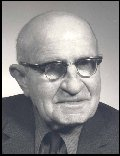 Born in Revelstoke, British Columbia, Bro. Eric Clarence Coursier received his D.L.S. Commission in 1916 and worked on Surveys of the Railway Belt. He went overseas in 1917 with the 2nd Canadian Tramway Co., and took part in the location and construction of light railways in France. From 1922 to 1930, Bro. Coursier was Forest Engineer and Surveyor with the Dominion Forest Service, working out of Prince Albert, Saskatchewan, and in 1930, he was named Supervisor of Surveys with the newly formed Department of Natural Resources. He was District Superintendent, Department of Natural Resources, in Prince Albert from 1936 to 1944. After 1945, he worked with the Ontario-Minnesota Pulp and Paper Company, and later conducted a part-time private practise in Prince Albert. Bro. Coursier joined our lodge on February 13, 1923.
Born in Revelstoke, British Columbia, Bro. Eric Clarence Coursier received his D.L.S. Commission in 1916 and worked on Surveys of the Railway Belt. He went overseas in 1917 with the 2nd Canadian Tramway Co., and took part in the location and construction of light railways in France. From 1922 to 1930, Bro. Coursier was Forest Engineer and Surveyor with the Dominion Forest Service, working out of Prince Albert, Saskatchewan, and in 1930, he was named Supervisor of Surveys with the newly formed Department of Natural Resources. He was District Superintendent, Department of Natural Resources, in Prince Albert from 1936 to 1944. After 1945, he worked with the Ontario-Minnesota Pulp and Paper Company, and later conducted a part-time private practise in Prince Albert. Bro. Coursier joined our lodge on February 13, 1923.
Richard H. Knight, Dominion Land Surveyor & Mining Engineer
circa 1858 — October 16, 1931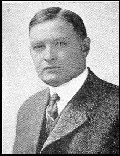 Born in Bruce Mines on Georgian Bay, Bro. Richard Harold Knight graduated from the School of Practical Science at Toronto in 1902 and supplemented this course by post-graduate work in mining and metallurgy, receiving the degree of B.A.Sc., from the University of Toronto. The early part of Bro. Knight's surveying and engineering career was spent in northern and western Ontario where he was actively engaged in the location and construction of the Algoma Central and Hudson Bay railway, the Algoma Eastern railway, and the Lake Huron and Northern Ontario railway. In 1904, he obtained his commission as Dominion Land Surveyor. He moved to Ottawa, and became a member of the staff of the Topographical Survey of Canada. Bro. Knight joined our lodge on February 10, 1925.
Born in Bruce Mines on Georgian Bay, Bro. Richard Harold Knight graduated from the School of Practical Science at Toronto in 1902 and supplemented this course by post-graduate work in mining and metallurgy, receiving the degree of B.A.Sc., from the University of Toronto. The early part of Bro. Knight's surveying and engineering career was spent in northern and western Ontario where he was actively engaged in the location and construction of the Algoma Central and Hudson Bay railway, the Algoma Eastern railway, and the Lake Huron and Northern Ontario railway. In 1904, he obtained his commission as Dominion Land Surveyor. He moved to Ottawa, and became a member of the staff of the Topographical Survey of Canada. Bro. Knight joined our lodge on February 10, 1925.
Dr. Horace O. Merriman, Electrical Recording Engineer
circa 1888 — circa 1972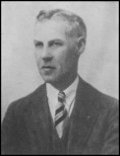 Bro. Horace Owen Merriman was born in Hamilton, Ontario, and went on to a career in Electrical Engineering. In 1920, together with British engineer Lionel Guest, he patented the moving coil recording head for disc recording which helped usher in the electrical era of recording. The first commercial recording of this type anywhere was made by Bro. Merriman during the ceremony of the burial of the Unknown Warrior in Westminster Abbey on November 11, 1920. Columbia Records sold copies for charity and these recordings were the first to be sold using any type of electrical process. In 1924 he became a member of the Research Council of Canada, developing a method of dealing with radio inductive interference. After 1925, he was the Engineer-in-Charge of the Interference Section of the Radio Division of the Department of Transport. Bro. Merriman was initiated into our lodge on February 9, 1926.
Bro. Horace Owen Merriman was born in Hamilton, Ontario, and went on to a career in Electrical Engineering. In 1920, together with British engineer Lionel Guest, he patented the moving coil recording head for disc recording which helped usher in the electrical era of recording. The first commercial recording of this type anywhere was made by Bro. Merriman during the ceremony of the burial of the Unknown Warrior in Westminster Abbey on November 11, 1920. Columbia Records sold copies for charity and these recordings were the first to be sold using any type of electrical process. In 1924 he became a member of the Research Council of Canada, developing a method of dealing with radio inductive interference. After 1925, he was the Engineer-in-Charge of the Interference Section of the Radio Division of the Department of Transport. Bro. Merriman was initiated into our lodge on February 9, 1926.
Bruce W. Waugh, Dominion Land Surveyor
circa 1877 — April 23, 1972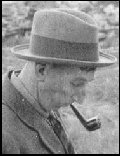 Bro. Bruce Wallace Waugh was Surveyor General of Dominion Lands for the federal government for 45 years. During his period of office, Bro. Waugh was inspired with the real need for adequate aeronautical charts for Canada, and the present complete coverage of Canada with an excellent series of 8 mile to 1 inch maps is an outstanding achievement and a monument to his untiring efforts and interest in the mapping of Canada. Bro. Waugh was in charge of the portion of the Saskatchewan-Alberta Boundary Commission survey between Lake Athabasca and the 60th Parallel. He was a member and past president of the Canadian Institute of Surveying and Photogrammetry. Waugh Lake, located approximately 343 km north-east of Fort McMurray, Alberta, was officially named after him in 1939. Bro. Waugh joined our lodge on January 11, 1927.
Bro. Bruce Wallace Waugh was Surveyor General of Dominion Lands for the federal government for 45 years. During his period of office, Bro. Waugh was inspired with the real need for adequate aeronautical charts for Canada, and the present complete coverage of Canada with an excellent series of 8 mile to 1 inch maps is an outstanding achievement and a monument to his untiring efforts and interest in the mapping of Canada. Bro. Waugh was in charge of the portion of the Saskatchewan-Alberta Boundary Commission survey between Lake Athabasca and the 60th Parallel. He was a member and past president of the Canadian Institute of Surveying and Photogrammetry. Waugh Lake, located approximately 343 km north-east of Fort McMurray, Alberta, was officially named after him in 1939. Bro. Waugh joined our lodge on January 11, 1927.
Dr. Charles M. Sternberg, Paleontologist & Biostratigrapher, Fellow Royal Society of Canada
September 18, 1885 — September 8, 1981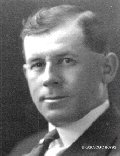 W. Bro. Charles Mortram Sternberg was born in Lawrence, Kansas, from a family of famous American fossil collectors. His father, Charles Hazelius Sternberg, is credited with discovering the world's first dinosaur mummy. After moving to Canada, W. Bro Sternberg took over the scientific description of fossil vertebrates for the Geological Survey. He published 47 papers on fossil vertebrates, many based on his own remarkable discoveries. Late in his career, he collected and described Pachyrhinosaurus, Brachylophosaurus, Parksosaurus and Edmontonia. In 1949, he was elected a fellow of the Royal Society of Canada. He retired as assistant biologist to the National Museum of Canada in 1950 and later helped to set up Dinosaur Provincial Park in Alberta. Honourary degrees were given to him by the University of Calgary and Carleton University in Ottawa. W. Bro. Sternberg was initiated into our lodge on February 21, 1927 and served as Worshipful Master in 1949.
W. Bro. Charles Mortram Sternberg was born in Lawrence, Kansas, from a family of famous American fossil collectors. His father, Charles Hazelius Sternberg, is credited with discovering the world's first dinosaur mummy. After moving to Canada, W. Bro Sternberg took over the scientific description of fossil vertebrates for the Geological Survey. He published 47 papers on fossil vertebrates, many based on his own remarkable discoveries. Late in his career, he collected and described Pachyrhinosaurus, Brachylophosaurus, Parksosaurus and Edmontonia. In 1949, he was elected a fellow of the Royal Society of Canada. He retired as assistant biologist to the National Museum of Canada in 1950 and later helped to set up Dinosaur Provincial Park in Alberta. Honourary degrees were given to him by the University of Calgary and Carleton University in Ottawa. W. Bro. Sternberg was initiated into our lodge on February 21, 1927 and served as Worshipful Master in 1949.
Dr. George S. Hume, Geologist, Order of the British Empire, Fellow Royal Society of Canada
March 1, 1893 — circa 1965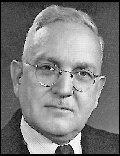 Born in Milton West, Ontario, Bro. George Sherwood Hume was a graduate of the University of Toronto. He served in World War I, before returning to Yale University where he completed a Ph.D. in 1920. The following year he joined the Geological Survey of Canada, becoming Chief and later Director-General of Scientific Services in the Department of Mines and Resources. In the King's Dominion Day Honours list of 1946, he was awarded an Order of the British Empire in recognition of his services. Bro. Hume was president of the Geological Association of Canada, the Royal Society of Canada and the Geological Association of America. His considerable library of geological material, presented to the University of Calgary Geology Department, helped form the holdings of Gallagher Library. Following his retirement he worked with Westcoast Transmission in Calgary. Bro. Hume was initiated into our lodge on October 11, 1932.
Born in Milton West, Ontario, Bro. George Sherwood Hume was a graduate of the University of Toronto. He served in World War I, before returning to Yale University where he completed a Ph.D. in 1920. The following year he joined the Geological Survey of Canada, becoming Chief and later Director-General of Scientific Services in the Department of Mines and Resources. In the King's Dominion Day Honours list of 1946, he was awarded an Order of the British Empire in recognition of his services. Bro. Hume was president of the Geological Association of Canada, the Royal Society of Canada and the Geological Association of America. His considerable library of geological material, presented to the University of Calgary Geology Department, helped form the holdings of Gallagher Library. Following his retirement he worked with Westcoast Transmission in Calgary. Bro. Hume was initiated into our lodge on October 11, 1932.
Herbert W. Beall, Forestry Engineer, Fellow Canadian Institute of Forestry, Order of Canada
September 29, 1908 — December 3, 2000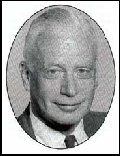 Bro. Herbert Wilson Beall was born in Ottawa, and attended Queen's University before becoming entranced by forestry research during a summer job at the Petawawa Forest Experiment Station. He transferred to the University of Toronto and graduated with a B.Sc.F. in 1932. The forest fire danger rating system, highly visible road signs that rate danger from 'low' to 'extreme', is one of Bro. Beall's most visible legacies. He served as Chief of the Forestry Operations Division in the 1950s, Director of the Forestry Administrative Branch from 1961 to 1964 and special adviser to the Deputy Minister from 1965 to 1969. After retirement he was advisor to the International Development Research Centre in Africa and South America. Bro. Beall was initiated into our lodge on March 14, 1933 and received a 60 year long-service award in 1993. Shortly after his death, he was named an Officer of the Order of Canada.
Bro. Herbert Wilson Beall was born in Ottawa, and attended Queen's University before becoming entranced by forestry research during a summer job at the Petawawa Forest Experiment Station. He transferred to the University of Toronto and graduated with a B.Sc.F. in 1932. The forest fire danger rating system, highly visible road signs that rate danger from 'low' to 'extreme', is one of Bro. Beall's most visible legacies. He served as Chief of the Forestry Operations Division in the 1950s, Director of the Forestry Administrative Branch from 1961 to 1964 and special adviser to the Deputy Minister from 1965 to 1969. After retirement he was advisor to the International Development Research Centre in Africa and South America. Bro. Beall was initiated into our lodge on March 14, 1933 and received a 60 year long-service award in 1993. Shortly after his death, he was named an Officer of the Order of Canada.
Dr. Alfred W. Jolliffe, Geologist, Geological Survey of Canada
circa 1907 — August 5, 1988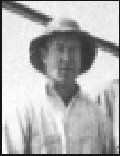 Bro. Alfred Walton Jolliffe graduated in 1929 from Queen's University, Kingston, Ontario, with an Honours B.A. in Geological Sciences and later earned a Ph.D. at Princeton. He joined the Geological Service of Canada, and carried out mapping in the Northwest Territories that was later to prove extremely important when uranium supplies were needed for atomic research. Throughout July and August of 1935, Bro. Jolliffe's assistants surveyed much of the north side of Great Slave Lake. An island in Yellowknife Bay bears his name and there is also a mineral called metagreenalite named after him. In 1945, he turned to teaching, first at McGill University, then in 1950 at Queen's University, where he gained nation-wide recognition as an outstanding teacher. Bro. Jolliffe joined our lodge on January 12, 1937.
Bro. Alfred Walton Jolliffe graduated in 1929 from Queen's University, Kingston, Ontario, with an Honours B.A. in Geological Sciences and later earned a Ph.D. at Princeton. He joined the Geological Service of Canada, and carried out mapping in the Northwest Territories that was later to prove extremely important when uranium supplies were needed for atomic research. Throughout July and August of 1935, Bro. Jolliffe's assistants surveyed much of the north side of Great Slave Lake. An island in Yellowknife Bay bears his name and there is also a mineral called metagreenalite named after him. In 1945, he turned to teaching, first at McGill University, then in 1950 at Queen's University, where he gained nation-wide recognition as an outstanding teacher. Bro. Jolliffe joined our lodge on January 12, 1937.
Ivan J.H. Sparks, International Junior Chambers of Commerce, Founding Family of Ottawa
circa 1918 — May 24, 1991
Bro. Ivan Henry Joseph Sparks was born in Ottawa and attended Lisgar Collegiate in the 1930s. Bro. Sparks was Canadian secretary-general and held a Senatorship in the International Junior Chambers of Commerce (Jaycees International). He was a member of one of the founding families of Ottawa and Sparks Street is named after them. The history of Sparks Street dates back to the pre-Confederation days of Colonel John By when Ottawa was called Bytown. In approximately 1848, Nicholas Sparks cut Sparks Street through his property from Bank Street to Biddy's Lane, known today as Elgin Street. His property stretched across to where the Westin Hotel stands today and part of it was expropriated for the Rideau Canal. Sparks donated land for a church, fire station, and other public building sites such as City Hall, which today is the site of the National Arts Centre. Bro. Sparks was initiated into our lodge on May 14, 1940.
Rutherford J. Parlee, Civil Engineer, Grand Steward
September 24, 1910 — August 28, 1998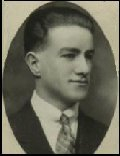 V.W. Bro. Rutherford Justus Parlee attended the University of New Brunswick, graduating in 1928. He was a recipient of the prestigious Ketchum Medal in 1932, awarded each year to the Civil Engineering student having the highest standing. He served as Worshipful Master in 1958, Acting Secretary in 1959 and Treasurer in 1961. In 1960 he played a pivotal role in the affairs of both our lodge and the Ottawa Masonic District, working with the Centennial Planning Committee and serving as District Secretary along side R.W. Bro. Effingham Deans Berry, District Deputy Grand Master. During our centennial year of 1961, he was appointed as Grand Steward by M.W. Bro. R.W. Treleaven. As well as a lifetime of dedication to craft masonry, he shared with the late V.W. Bro. E.S. Hornby, a profound support of the 'meals on wheels' program in Ottawa. Together, they delivered countless meals to an appreciative populace. V.W. Bro. Parlee was initiated into our lodge on March 11, 1947.
V.W. Bro. Rutherford Justus Parlee attended the University of New Brunswick, graduating in 1928. He was a recipient of the prestigious Ketchum Medal in 1932, awarded each year to the Civil Engineering student having the highest standing. He served as Worshipful Master in 1958, Acting Secretary in 1959 and Treasurer in 1961. In 1960 he played a pivotal role in the affairs of both our lodge and the Ottawa Masonic District, working with the Centennial Planning Committee and serving as District Secretary along side R.W. Bro. Effingham Deans Berry, District Deputy Grand Master. During our centennial year of 1961, he was appointed as Grand Steward by M.W. Bro. R.W. Treleaven. As well as a lifetime of dedication to craft masonry, he shared with the late V.W. Bro. E.S. Hornby, a profound support of the 'meals on wheels' program in Ottawa. Together, they delivered countless meals to an appreciative populace. V.W. Bro. Parlee was initiated into our lodge on March 11, 1947.
Harry T.R. Mount, Neurosurgeon
circa 1896 — circa 1986
Bro. Harry Telford Roy Mount of Aurora, Ontario, fought as a sapper with the Canadian Engineers Signal Corps from 1916 to 1919, at Passchendale, Amiens, Arras, Cambrai and Vimy Ridge. He was awarded the Military Medal in September of 1917. Graduating in Medicine from the University of Toronto in 1924, he began postgraduate training in surgery and neurosurgery at the Mayo Clinic in 1925. Bro. Mount received a specialty in neurosurgery from the University of Minnesota in 1931 and opened a practice in Ottawa in 1933. He had a reputation such that the most difficult cases, or operations so big that one surgeon couldn't handle them, were saved for him. Bro. Mount was initiated into our lodge on April 13, 1948.
Rev. Gerhard J. Harder, Doctor of Theology, Minister & Translator
October 14, 1899 — December 17, 1988
Born in Friedensdorf, Russia, Rev. Bro. Gerhard Johann Harder studied at the Halbstadt Zentralschule and emigrated to Canada in 1924. Settling first in Saskatchewan, then Sedalia, Alberta, he was ordained in 1928 for ministry in the local Mennonite congregation. In 1933, he became a teacher at the La Glace Bible School operated by the local Mennonite Brethren church. In 1936 he became a pastor in the Regular Baptist church in British Columbia. Bro. Harder received a Th.D. degree from National Bible College in Wichita, Kansas in 1942. However his life took a turn and he became a translator for the Canadian civil service in Ottawa, a position which he held for 25 years. He continued service as a supply minister for Baptist churches during those years. Rev. Bro. Harder was initiated into our lodge on April 12, 1949.
James G. Kettles, Ottawa Police Force, Chief of Saskatoon Police, Order of Canada
circa 1912 — December 11, 1983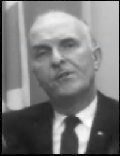 Born in Ramsayville, Ontario, Bro. James George Kettles devoted a lifetime of service to police work in Canada. A staff sergeant while with the Ottawa Police Force, he assumed the office of Saskatoon Chief of Police in February 1954 and initiated a complete reorganization of the force and restructuring of police headquarters. A respected writer and speaker on police matters, he served as president of the Canadian Police Chief’s Association. Bro. Kettles was an active member of the Masonic Order, the Saskatoon Rotary Club, and the Saskatoon Board of Trade. After more than thirty-five years of police service, he was made a Member of the Order of Canada in 1972. In 1977, he was named Saskatoon Citizen of the Year. Bro. Kettles was initiated into our lodge on January 8, 1952.
Born in Ramsayville, Ontario, Bro. James George Kettles devoted a lifetime of service to police work in Canada. A staff sergeant while with the Ottawa Police Force, he assumed the office of Saskatoon Chief of Police in February 1954 and initiated a complete reorganization of the force and restructuring of police headquarters. A respected writer and speaker on police matters, he served as president of the Canadian Police Chief’s Association. Bro. Kettles was an active member of the Masonic Order, the Saskatoon Rotary Club, and the Saskatoon Board of Trade. After more than thirty-five years of police service, he was made a Member of the Order of Canada in 1972. In 1977, he was named Saskatoon Citizen of the Year. Bro. Kettles was initiated into our lodge on January 8, 1952.
Dr. Norman F.H. Bright, Research Chemist, Fellow Royal Institute of Chemistry
circa 1913 — November 26, 1975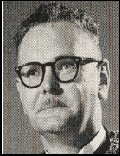 W. Bro. Norman Francis Henry Bright was born in Dorsett, England, graduating in 1934 with first class honours in Chemistry, and was awarded a Ph.D. for research in Physical Chemistry in 1937. He worked as a Research Chemist with Imperial Chemical Industries involved with explosives, Post Doctoral Research Fellow at the National Research Council of Canada and as Senior Scientific Officer with the Mines Branch of Canada's Department of Mines and Technical Surveys. After retirement, he moved to the West Indies island of Dominica with the intent of assisting local farmers in water purification and protein production techniques. Shortly after arriving, he and his wife, Marion were assassinated by a local gang. W. Bro. Bright joined our lodge on April 8, 1952 and served as Worshipful Master during our Centennial year of 1961. He served the 1960-1961 term as Grand Master of the Grand Council of Royal and Select Masters of Ontario.
W. Bro. Norman Francis Henry Bright was born in Dorsett, England, graduating in 1934 with first class honours in Chemistry, and was awarded a Ph.D. for research in Physical Chemistry in 1937. He worked as a Research Chemist with Imperial Chemical Industries involved with explosives, Post Doctoral Research Fellow at the National Research Council of Canada and as Senior Scientific Officer with the Mines Branch of Canada's Department of Mines and Technical Surveys. After retirement, he moved to the West Indies island of Dominica with the intent of assisting local farmers in water purification and protein production techniques. Shortly after arriving, he and his wife, Marion were assassinated by a local gang. W. Bro. Bright joined our lodge on April 8, 1952 and served as Worshipful Master during our Centennial year of 1961. He served the 1960-1961 term as Grand Master of the Grand Council of Royal and Select Masters of Ontario.
Gerald E. Wade, Civil Engineer
circa 1922 — December 1, 1986
Born in Fredericton, W. Bro. Gerald Elmer Wade volunteered to serve his country at the age of 17 and spent over five years in the services, serving with the Canadian forces in the Mediterranean and Western Europe, picking up the nickname 'Gunner'. In 1949, W. Bro. Wade earned his Engineering certificate and a B.Sc. from Carleton University, a D.L.S., and two provincial survey licenses (Nova Scotia and Prince Edward Island). After joining the Canadian Hydrographic Service, he rose to the position of Hydrographer-in-Charge of Surveys. He retired from the C.H.S. in 1977, and established the Hydrographic Surveying programs at Humber and Erindale Colleges. W. Bro. Wade was initiated into our lodge on November 10, 1959 and served as Worshipful Master in 1970.
Michael R. Hughson, Minerologist, Department of Mines
August 29, 1927 — March 17, 2007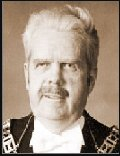 Born in Detroit, Michigan, W. Bro. Michael Rossiter Hughson moved to the Niagara area, and graduated in 1945 from the London Collegiate Institute. He enlisted with the United States Army Air Forces for a six month period and then enrolled in the University of Western Ontario, graduating in 1951 with a B.Sc. in Geology. For a short time, W. Bro. Hughson worked with Eldorado Mining and Refining and then took employment for 36 years as a mineralogist with Canada's Department of Mines. W. Bro. Hughson was initiated into our lodge on April 8, 1961 and served as Worshipful Master in 1969. He served the 1980-1981 term as Grand Master of the Grand Council of Royal and Select Masters of Ontario, and held the office of Lodge Chaplain from 1994 until his death. In 2003, he was presented with a 25 year Past Master Award.
Born in Detroit, Michigan, W. Bro. Michael Rossiter Hughson moved to the Niagara area, and graduated in 1945 from the London Collegiate Institute. He enlisted with the United States Army Air Forces for a six month period and then enrolled in the University of Western Ontario, graduating in 1951 with a B.Sc. in Geology. For a short time, W. Bro. Hughson worked with Eldorado Mining and Refining and then took employment for 36 years as a mineralogist with Canada's Department of Mines. W. Bro. Hughson was initiated into our lodge on April 8, 1961 and served as Worshipful Master in 1969. He served the 1980-1981 term as Grand Master of the Grand Council of Royal and Select Masters of Ontario, and held the office of Lodge Chaplain from 1994 until his death. In 2003, he was presented with a 25 year Past Master Award.
Mathias Wuhr, Dominion Land Surveyor
circa 1929 — July 21, 1999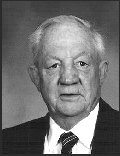 Bro. Mathias Wuhr was born in Minto, New Brunswick where he graduated in 1946 from the Minto Newcastle Consolidated School. He served as head of Local 7409 of the United Mine Workers of America in Minto during the late 1930s, and was awarded a medal by the Carnegie Foundation of New York for heroism displayed during a perilous mine rescue operation in 1937. In November 1949, he joined the Topographical Survey of the Department of Mines and Technical Surveys and spent two years working on various phases of topographic mapping both in the office and in the field. Bro. Wuhr spent the summer of 1951 in Newfoundland working on mapping control. In 1952, he went to the Northwest Territories with the Legal Surveys Division to work on the survey of the highway right-of-way west of Yellowknife. He completed the examinations for Dominion Land Surveyor commission in 1956, and worked with the Legal Surveys Division until his retirement in September 1989. Bro. Wuhr joined our lodge on February 27, 1968.
Bro. Mathias Wuhr was born in Minto, New Brunswick where he graduated in 1946 from the Minto Newcastle Consolidated School. He served as head of Local 7409 of the United Mine Workers of America in Minto during the late 1930s, and was awarded a medal by the Carnegie Foundation of New York for heroism displayed during a perilous mine rescue operation in 1937. In November 1949, he joined the Topographical Survey of the Department of Mines and Technical Surveys and spent two years working on various phases of topographic mapping both in the office and in the field. Bro. Wuhr spent the summer of 1951 in Newfoundland working on mapping control. In 1952, he went to the Northwest Territories with the Legal Surveys Division to work on the survey of the highway right-of-way west of Yellowknife. He completed the examinations for Dominion Land Surveyor commission in 1956, and worked with the Legal Surveys Division until his retirement in September 1989. Bro. Wuhr joined our lodge on February 27, 1968.
Irving Rivers, Retail Clothier & Entrepreneur
circa 1924 — November 1, 1997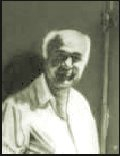 For over 50 years, Bro. Irving Rivers 'cornered the market' in the Ottawa Byward Market. What started as a uniform supply store in 1946, grew into a mecca for uniforms, army surplus, rainwear, security accessories, travel accessories and safety clothing. Named after Bro. Rivers himself, the store is known world wide by the millions of visitors who have come to shop in this 'place of plenty'. Known to generations of Ottawans as 'Mr. Market', he always took time to chat with customers as they searched through his stock of boots and backpacks, hats and scarves and flags. The legendary Ottawa retailer is recalled as a compassionate, caring family man as well as a man who loved and supported his community through years of change and growth. Bro. Rivers was initiated into our lodge on April 26, 1968.
For over 50 years, Bro. Irving Rivers 'cornered the market' in the Ottawa Byward Market. What started as a uniform supply store in 1946, grew into a mecca for uniforms, army surplus, rainwear, security accessories, travel accessories and safety clothing. Named after Bro. Rivers himself, the store is known world wide by the millions of visitors who have come to shop in this 'place of plenty'. Known to generations of Ottawans as 'Mr. Market', he always took time to chat with customers as they searched through his stock of boots and backpacks, hats and scarves and flags. The legendary Ottawa retailer is recalled as a compassionate, caring family man as well as a man who loved and supported his community through years of change and growth. Bro. Rivers was initiated into our lodge on April 26, 1968.
